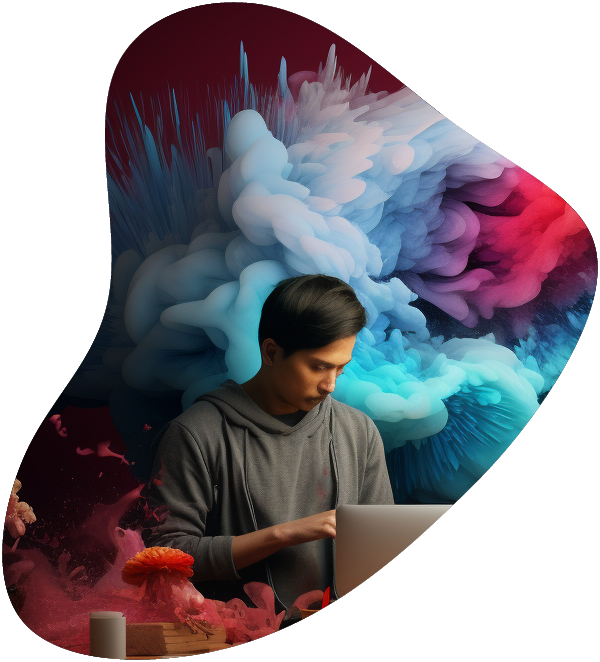What Is 5G?
5G stands for the fifth generation of cellular network technology, providing faster speeds, lower latency, and more reliable connections on mobile devices and other 5G-enabled technologies compared to its predecessor,

In the captivating realm of cinema, editing film definition transcends its technical connotation, emerging as the unsung hero orchestrating the rhythm of storytelling. Film editing, akin to an invisible conductor, masterfully guides the audience through an emotional symphony. This craft extends far beyond mere snipping and splicing. In this intricate art form, every cut, transition, and fade communicates a profound narrative impact. Embarking on this journey with a sprinkle of wit, we delve into the mesmerizing world of film editing. Here, each frame is a pivotal storyteller, and every second unfolds a unique story, highlighting the critical role of editing in movies and the film industry.
What exactly embodies film editing? At its essence, it involves the careful selection and combination of shots to weave a cohesive and compelling narrative tapestry. Picture film editing as cinema’s culinary art, akin to a chef expertly blending ingredients to craft a delectable dish. In this context, an editor harmonizes scenes to create a cinematic masterpiece. The definition of film editing surpasses the basic mechanics of cutting film. It’s an intricate dance of timing, rhythm, and, above all, storytelling. This is why editing is vital in film – it possesses the power to elevate or diminish the narrative’s impact, making it a pivotal element in the filmmaking process [1].

From mastering editing software to understanding the nuances of visual storytelling, this series is designed to equip aspiring video editors with the tools and insights needed to excel in this dynamic and creative field.
Exploring the types of film editing is akin to venturing through a vast, all-you-can-edit buffet. This realm offers an array of styles, each with its distinct aesthetic and narrative approach. For example, continuity editing focuses on creating a seamless narrative flow, maintaining a consistent sense of time and space. This style is crucial in preserving the film’s illusion of reality. Alternatively, montage editing embarks on a more imaginative route, piecing together varied shots to communicate broader concepts or the passage of time. This approach often infuses a film with deeper thematic layers.
Then we have graphic editing in film, where visual elements are meticulously curated to forge striking, often symbolic, contrasts. This style is particularly notable for its ability to convey complex ideas through visual metaphor, adding a layer of depth to the film’s narrative structure. Each editing style imparts a unique flavor to the cinematic experience, reflecting the diverse techniques and creative visions that define the art of film editing.
Ever wondered how to make edits of movies? The process of editing a movie is a meticulous blend of technical prowess and creative vision. It starts with assembling shots into a rough cut, a raw, unpolished version of the final product. This is where the magic begins. Each shot, each frame, is scrutinized and woven together to form the initial tapestry of the film’s narrative.
Film production and editing have been revolutionized by digital advancements, introducing new dimensions to this intricate process. These modern tools have made editing more efficient and versatile, yet the foundational principles of storytelling remain unchanged. The editor’s role is pivotal, as they sculpt the pacing and rhythm to evoke the intended emotional response from the audience. Whether it’s a high-octane blockbuster or a nuanced indie film, the editing shapes the viewer’s experience, subtly guiding them through the narrative’s ebb and flow.
The interplay between cinematography and editing is akin to a perfectly choreographed dance. Cinematography is the art of capturing visual elements – the raw materials of a film. Editing, on the other hand, is the art of refining and arranging these elements into a cohesive narrative. This synergy is essential in filmmaking, as it determines how effectively a story is told.
Cinematography editing is a delicate balancing act. It involves choosing the best shots and angles that not only look visually stunning but also serve the narrative purpose. This aspect of editing underscores its importance in film – it’s about making choices that enhance the storytelling, ensuring that every visual element aligns seamlessly with the director’s vision. The editor, in collaboration with the cinematographer, ensures that each scene transitions smoothly, maintaining the film’s visual continuity and narrative coherence.
Discussing the importance of editing in film unveils the hidden mechanisms that drive cinematic storytelling. Editing is often described as an invisible art because of its subtle yet profound impact on how a story is perceived and experienced. This craft holds the power to manipulate time, space, and emotions, shaping the viewer’s journey through the film.
Effective editing can transform a narrative, building tension, suspense, and emotional depth. It’s about more than just assembling shots; it’s about crafting a rhythm that resonates with the audience. Different types of editing in film bring varied techniques and perspectives to storytelling. From the classic continuity style to more avant-garde approaches, each editing style offers unique ways to engage and captivate the audience. This diversity in editing styles enriches the filmmaking landscape, allowing stories to be told in innovative and impactful ways.
The history of editing in movies is a tapestry of technological and creative milestones. From the early days of physical film splicing, where editors physically cut and joined film strips, to the advent of digital editing suites that offer boundless possibilities, the journey has been remarkable. This evolution in film editing reflects not just advancements in technology but also shifts in storytelling paradigms.
Initially, classic Hollywood favored continuity editing, a style that prioritized seamless, invisible storytelling to maintain narrative flow. However, as filmmaking progressed, editors began experimenting with more bold and unconventional techniques. This shift led to the emergence of various editing styles in film, each bringing a unique flavor to the cinematic narrative. Today, editors blend these techniques, crafting stories that are not only visually captivating but also rich in narrative depth and complexity.

From mastering editing software to understanding the nuances of visual storytelling, this series is designed to equip aspiring video editors with the tools and insights needed to excel in this dynamic and creative field.
In wrapping up, the definition of film editing encompasses a fascinating blend of creativity, technical expertise, and narrative acumen. This journey from the initial stages of filming and editing to the final cinematic product is as intricate as it is fulfilling. The art of film editing, often unnoticed by the average viewer, is a crucial element that shapes the storytelling and emotional impact of a movie. As you next settle in to watch a film, take a moment to appreciate this invisible art form, the behind-the-scenes hero that plays a pivotal role in bringing cinematic stories to life.
Film editing is the process of selecting and arranging shots to create a coherent and compelling narrative in a movie. It’s crucial because it shapes the pace, tone, and overall storytelling of a film, impacting how the audience perceives and emotionally connects with the story.
The definition of editing in film has evolved from merely cutting and assembling film strips to a sophisticated art that involves digital technology. This evolution reflects changes in storytelling techniques and technological advancements, allowing for more creative freedom and complexity in film narratives.
Common types of film editing include continuity editing, which aims for seamless storytelling; montage editing, which uses rapid shot sequences to convey broader concepts; and graphic editing in film, where visual elements create symbolic juxtapositions. Each style contributes uniquely to the film’s narrative.
In today’s digital age, movie editing is predominantly done using advanced software and digital editing tools. These tools offer editors immense flexibility in manipulating shots, adding effects, and fine-tuning the narrative flow of a film, enhancing the storytelling process.
Cinematography and editing are considered a dynamic duo because they work in tandem to create the visual narrative of a film. Cinematography captures the raw visual elements, while editing arranges these elements into a coherent story, ensuring that the visual storytelling aligns with the director’s vision.

From mastering editing software to understanding the nuances of visual storytelling, this series is designed to equip aspiring video editors with the tools and insights needed to excel in this dynamic and creative field.
You may also like:
Adobe Premiere Classes : 10 Tips to Master Video Editing
How to Edit Videos for Beginners : From Novice to Pro
Film Editor Career : The Reel Deal on Cutting-Edge Success
Video Editing Lessons for Beginners : Tips, Tricks, and Techniques
Lorem ipsum dolor sit amet, consectetur adipiscing elit. Ut elit tellus, luctus nec ullamcorper mattis, pulvinar dapibus leo.
$49.99 Original price was: $49.99.$16.99Current price is: $16.99. / month with a 10-day free trial
5G stands for the fifth generation of cellular network technology, providing faster speeds, lower latency, and more reliable connections on mobile devices and other 5G-enabled technologies compared to its predecessor,
An Access Point Name (APN) is a setting on mobile devices that identifies an external network a device can connect to for accessing data services. Acting as a gateway, APNs
Adaptive Encryption is an advanced security measure that dynamically adjusts its encryption methods and strength based on the perceived level of threat and the type of data being protected. This
Address Resolution Protocol (ARP) is a fundamental protocol used in the Internet Protocol (IP) networking realm. Its primary function is to map or resolve IP addresses to the physical machine
Advanced Driver-Assistance Systems (ADAS) are electronic systems in vehicles designed to enhance vehicle safety and aid the driver in the driving process. These systems use a variety of sensors, such
Agile Development Practices encompass a set of methodologies and principles aimed at improving the efficiency, flexibility, and adaptability of the software development process. These practices are designed to foster collaboration
Agile Requirements Engineering is a crucial discipline within software development and project management that focuses on the continuous identification, documentation, and management of the requirements for a project in an
Agile Testing is a software testing process that follows the principles of agile software development. It is an iterative testing process that is part of the development lifecycle, emphasizing flexibility,
Air-gap security is a network security measure that involves isolating a computer or network from external networks, including the internet and local area networks (LANs). This isolation is achieved physically,
Algorithmic Complexity Theory, often synonymous with Computational Complexity Theory, delves into the study of computational problems with respect to the resources they require for their solution. This theory categorizes problems
Ambient Intelligence (AmI) refers to electronic environments that are sensitive and responsive to the presence of people. This concept combines several key technologies, including IoT (Internet of Things), sensor technology,
Electronic components are the building blocks of electronic circuits; they are the individual pieces that, when combined, create the functionality of electronic devices. These components can be classified broadly into
ENDING THIS WEEKEND: Train for LIFE at our lowest price. Buy once and never have to pay for IT Training Again.

Get 15 courses covering training on Photoshop, Illustrator, Premier, After Effects and more in this comprehensive training series. Over 80 hours of on-demand video content showing you all the tricks and uses of the Adobe Creative Suite.